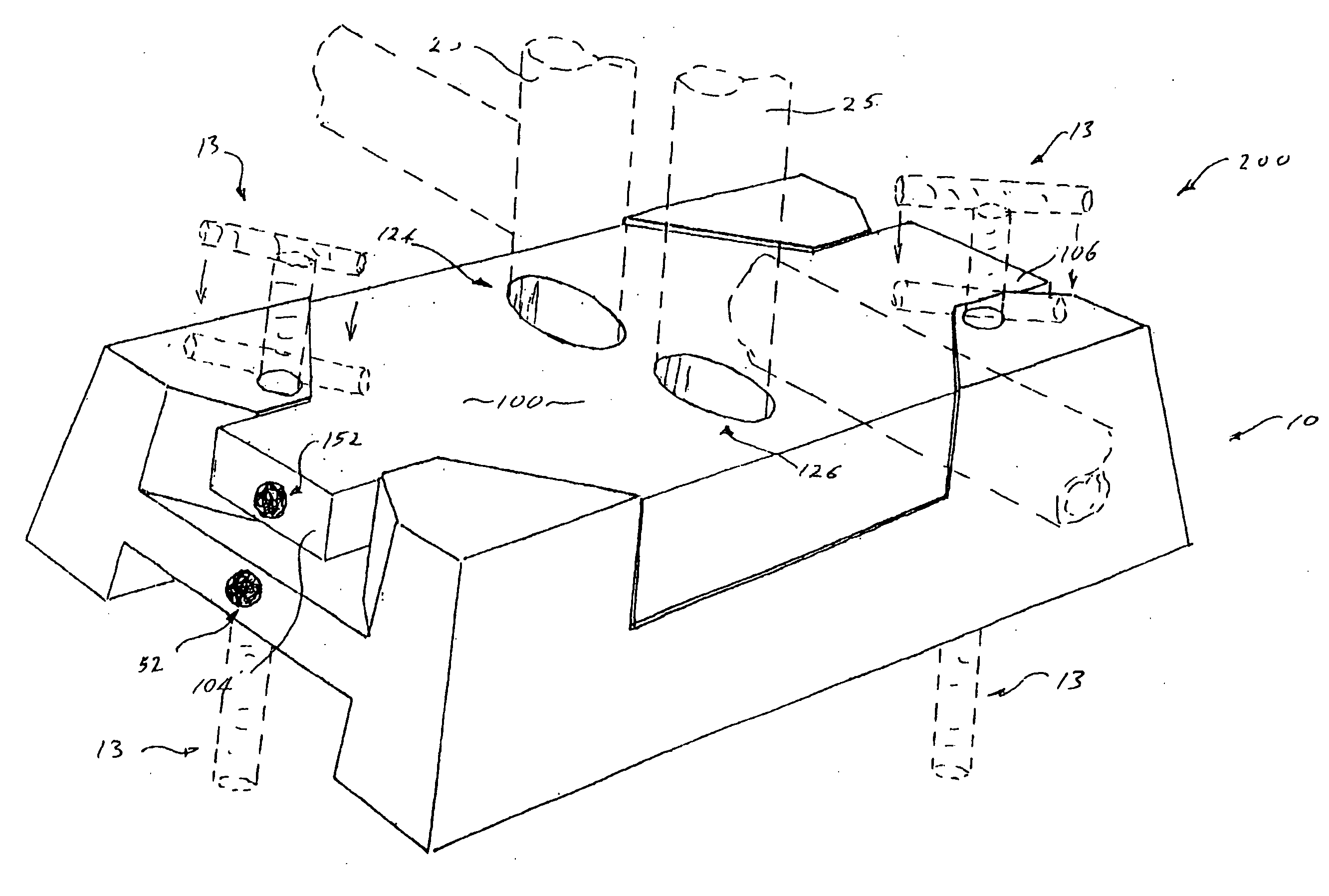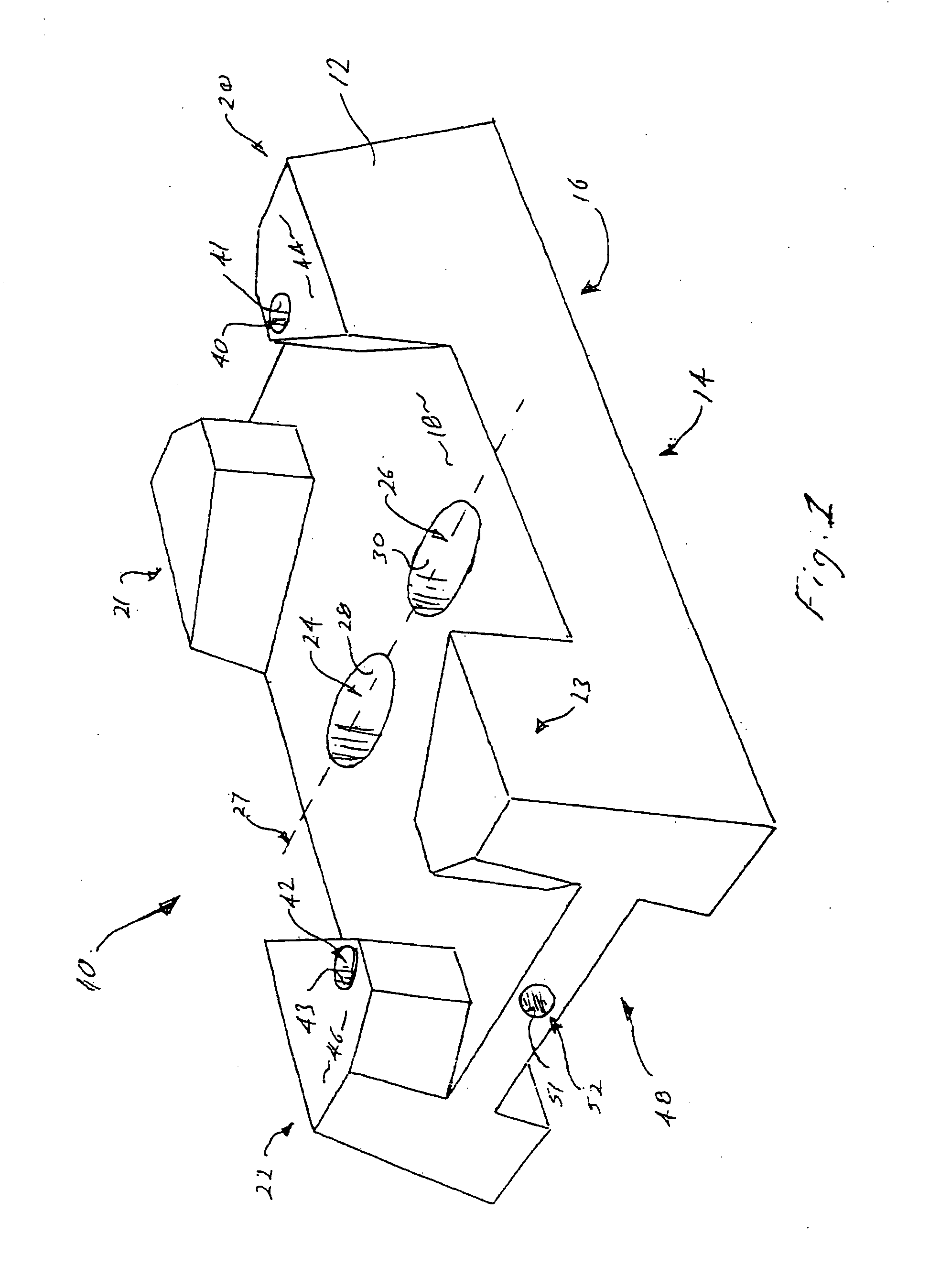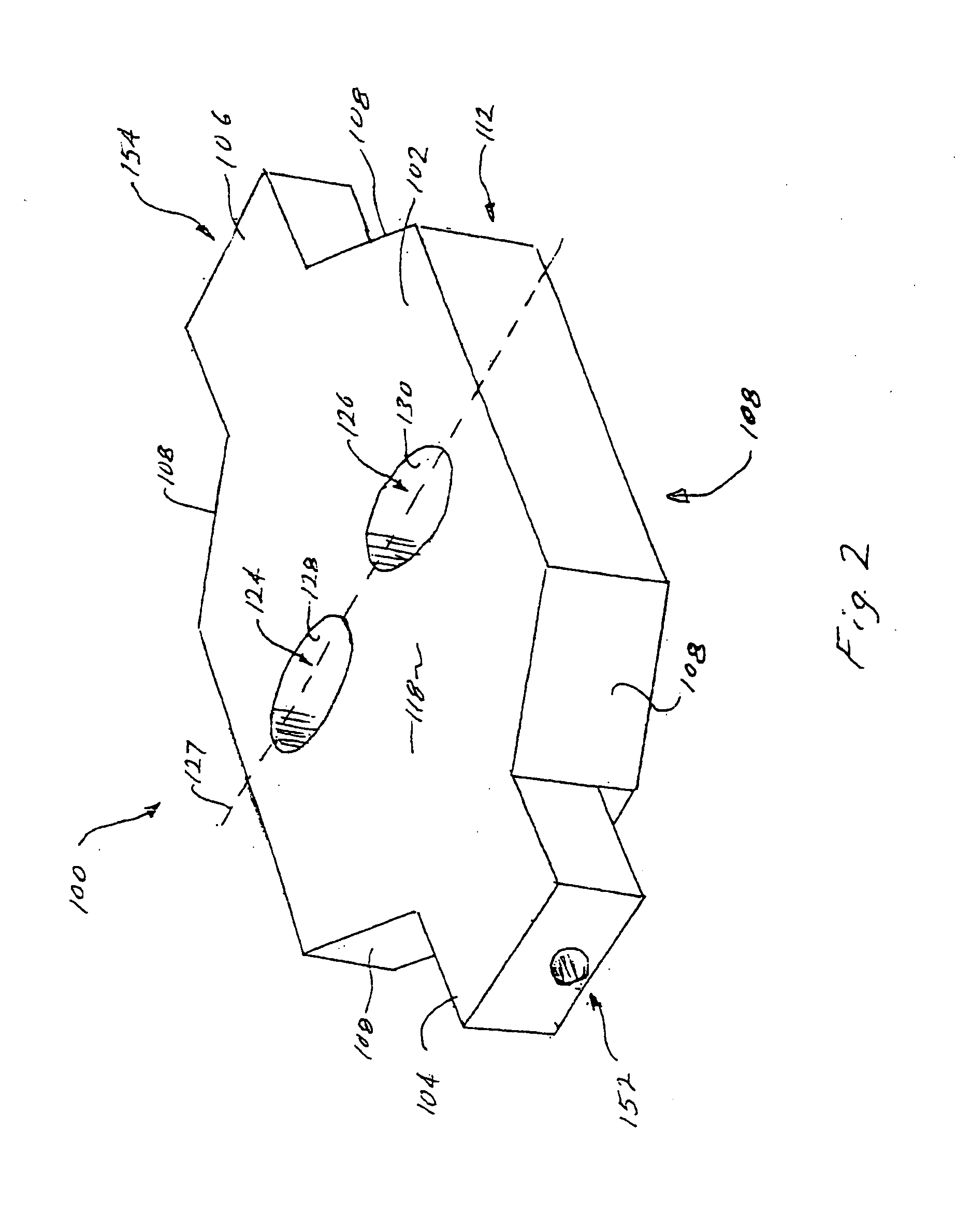Two-part fence base
a fence base and two-part technology, applied in the direction of traffic signals, applications, roads, etc., can solve the problems of reducing the stability of the fence, the panel at the end of a temporary fence will be very poorly supported, and the anchor block is unsuitable for acting as hinges or bearings
- Summary
- Abstract
- Description
- Claims
- Application Information
AI Technical Summary
Benefits of technology
Problems solved by technology
Method used
Image
Examples
Embodiment Construction
[0065]With reference to FIG. 1, a base portion 10 of a fence base is comprised of a shell 12 moulded in some suitable plastic. Shell 12 is formed as a generally rectangular prism having a rectangular base 14 open at its underside 16 as may be seen from the view from below of FIG. 6.
[0066]Shell 12 has an upper surface 18 parallel with rectangular base 14. The sides of shell 12 preferably taper inwardly to some extent as can best be seen in the side elevation and end elevation views of FIGS. 4 and 7. Projecting upwardly at each corner area of upper surface 18, are projections 20 to 23. Upper surface 18 is provided with apertures 24 and 26 arranged side by side and disposed along the transverse centre line 27 of upper surface 18.
[0067]Apertures 24 and 26 communicate with formers 28 and 30 respectively, integrally moulded with shell 12 and extending downwardly from the underside of upper surface 18 to the level of rectangular base 14 as best seen in the hidden detail of FIG. 4. Formers ...
PUM
| Property | Measurement | Unit |
|---|---|---|
| weight | aaaaa | aaaaa |
| weight | aaaaa | aaaaa |
| length | aaaaa | aaaaa |
Abstract
Description
Claims
Application Information
 Login to View More
Login to View More - R&D
- Intellectual Property
- Life Sciences
- Materials
- Tech Scout
- Unparalleled Data Quality
- Higher Quality Content
- 60% Fewer Hallucinations
Browse by: Latest US Patents, China's latest patents, Technical Efficacy Thesaurus, Application Domain, Technology Topic, Popular Technical Reports.
© 2025 PatSnap. All rights reserved.Legal|Privacy policy|Modern Slavery Act Transparency Statement|Sitemap|About US| Contact US: help@patsnap.com



